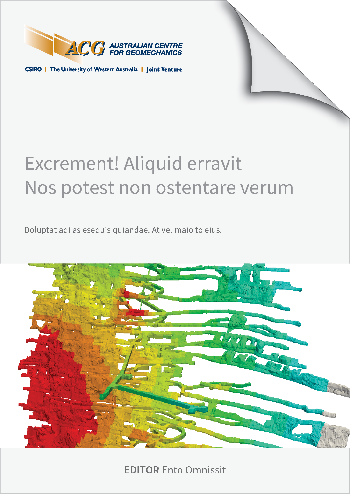Methodology for creating and calibrating DFN models from digital terrain models in underground mining, Chuquicamata underground case study

|
Authors: Divasto, C; Barindelli, G; Pereira, J |
DOI https://doi.org/10.36487/ACG_repo/2435_B-06
Cite As:
Divasto, C, Barindelli, G & Pereira, J 2024, 'Methodology for creating and calibrating DFN models from digital terrain models in underground mining, Chuquicamata underground case study', in Daniel Johansson & Håkan Schunnesson (eds), MassMin 2024: Proceedings of the International Conference & Exhibition on Mass Mining, Luleå University of Technology, Luleå, pp. 249-269, https://doi.org/10.36487/ACG_repo/2435_B-06
Abstract:
The acquisition of structural data for purposes of geometrical modelling of rock masses in underground works entails inherent difficulties given the density of structural data required, spatial limitations of mine workings, the safety standards compliance, and operational requirements that reduce the exposure time of bare rock in headings before the implementation of fortification. This work presents a methodology for the development of Discrete Fracture Network (DFN) models with a focus on underground mining usage. As an alternative to field mapping, virtual mapping methods of Digital Terrain Models (DTM) generated with photogrammetric techniques were applied. The workflow includes 4 main stages; (1) the first stage is associated with the generation of DTM with photogrammetric technology; (2) the second stage develops the capture of the fracture’s structural information focused on the geometric description of joints (orientation and persistence); (3) the third stage involves the processing of sampled data, identifying joint’s data sets, discontinuity density (P10) and finally, discontinuity’s trace length distribution applying the concept of fracture’s fractal behavior; (4) finally, the fourth stage consider the construction of DFN models and their calibration with respect to the previously defined structural parameters, this stage is carried out using WSP-Golder’s FracManTM commercial software. Also, an adjustment factor to incorporate borehole data is proposed. The methodology is applied to the Block Caving project Chuquicamata Underground Mine in Chile. The results show the influence of fractures persistence and scale effect on the fragmentation.
© Copyright 2025, Australian Centre for Geomechanics (ACG), The University of Western Australia. All rights reserved.
View copyright/legal information
Please direct any queries or error reports to repository-acg@uwa.edu.au
View copyright/legal information
Please direct any queries or error reports to repository-acg@uwa.edu.au